Aloobaloo – Sour Cherry – Health Benefits
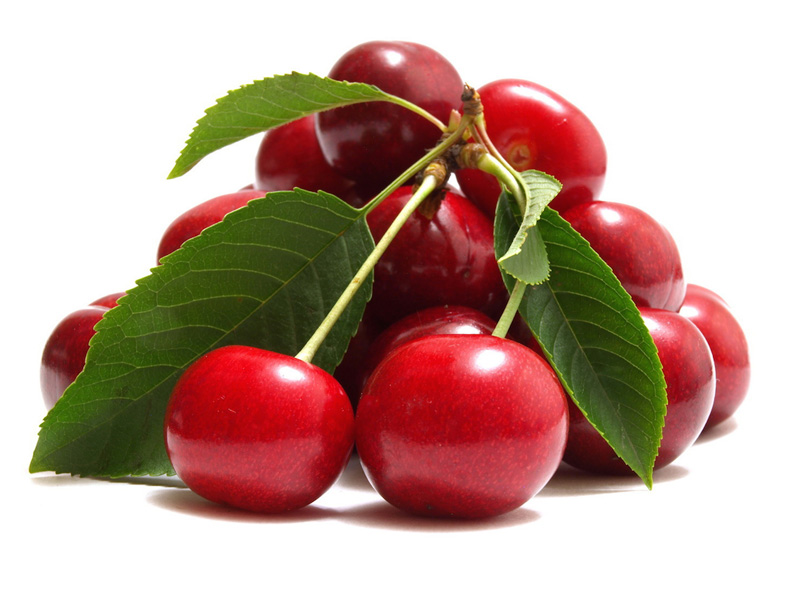
Sour Cherry Scientific Classification
| Rank | Scientific Name & (Common Name) |
|---|---|
| Kingdom | Plantae (Plants) |
| Subkingdom | Tracheobionta (Vascular plants) |
| Superdivision | Spermatophyta (Seed plants) |
| Division | Magnoliophyta (Flowering plants) |
| Class | Magnoliopsida (Dicotyledons) |
| Order | Rosales |
| Family | Rosaceae (Rose family) |
| Genus | Prunus L. (Plum) |
| Species | Prunus cerasus L. (Sour cherry) |
| Synonyms |
|
| Sour cherry Quick Facts | |
|---|---|
| Name: | Sour cherry |
| Scientific Name: | Prunus cerasus |
| Origin | Native to much of Europe and southwest Asia |
| Colors | Light to dark red |
| Shapes | Drupe 20 mm in length and 18 mm in width |
| Taste | Sweet/sour, but not bitter |
| Calories | 78 Kcal./cup |
| Major nutrients | Copper (17.89%) Vitamin C (17.22%) Vitamin A (14.14%) Manganese (7.57%) Dietary Fiber (6.58%) |
| Health benefits | Antioxidant Benefits, Reduced risk of stroke, Reduce Heart Disease and Diabetes, Eye Benefits, Brain Stimulation, Treatment of the Common Cold, Control Weight, Inflammation and Sprains, Digestive health |
Prunus cerasus is also known as Sour cherry, tart cherry, dwarf cherry and pie cherry. Prunus is the Latin name for plum trees. It originates from Greek “prunos” (plum or cherry). Cerasus from Latin phase for cherry. Therefore, Prunus cerasus implies cherry cherry, real original. It is widely cultivated deciduous shrub or small tree belongs to the family Rosaceae, in the genus Prunus L, native to Europe and southwest Asia, having white flowers and tart red fruit. It is closely connected to the sweet cherry (Prunus avium), but has a fruit which is more acidic, and also has greater nutritional benefits. Pie cherry, tart cherry and dwarf cherry are some common names of the Sour cherry. Some popular varieties of sour cherry are Balaton, amarelle, Jubileum, Mesabi, Northstar, Montmorency, Surefire,Danube, Meteor and Morello. Because of its sour taste it is found used in cherry desserts, cherry pies and other cherry-based recipes.
Plant
Sour Cherry is a deciduous or evergreen trees or shrubs growing 4–10 m tall, which do well in cooler, humid climates and prefers rich, well-drained, moist soil, Stem is covered with red to gray-brown bark, tight but rather rough, along with prominent horizontal lenticels, often peels. Its branches spread upwards and have smooth twigs. Leaves are usually deciduous, simple, alternate and serrated, 3-9 cm long, 2-5 cm wide, oval to obovate, smooth and glossy on top and downy underneath. Flowers are hermaphrodite, white and found in clusters of 3-5. Petals are notched or lobed and are found blooming during May.
Fruit
Sour Cherry is drupe fruit which is 20 mm in length and 18 mm in width. It is usually light to dark red colored. Sour cherry have are intense, tart and somewhat tannic flavor when fresh and sweet/sour, but not bitter in taste and is also available dried, frozen, and in juice. The skin of the fruit is smooth and firm with a glossy sheen. Its flesh, contain a small central seed which is light brown colored. Sour cherries are available from June to early August depending on region cultivar. Sour cherries, also known as tart or pie cherries are key ingredient in desserts like cakes, sorbets and ice cream. They are also a perfect cherry for glazes, sauces and reductions.
History
Prunus cerasus is supposed to have initiated as natural hybrid between Prunus avium and Prunus fruticosa within the Iranian Plateau or Eastern Europe and produced a new, distinct species. It is also said to have originated from Southeastern Europe between Russia and Turkey. Sour cherry is one of the America’s most sought-after fruits, usually the Montmorency and Balaton varieties, mainly grown in Washington, Michigan, Utah, Pennsylvania, Wisconsin, Oregon, and New York.
Nutritional Value
Apart from their intense, tart and somewhat tannic taste Sour cherry is a good source of nutrients, vitamins and minerals. Consuming 155 gram of sour cherry offers 0.161 mg of Copper, 15.5 mg of Vitamin C,99 µg of Vitamin A, 0.174 mg of Manganese, 2.5 g of Total dietary Fiber, 0.5 mg of Iron,268 mg of Potassium and 0.068 mg of Vitamin B6.
Calories 78 Kcal. Calories from Fat 4.14 Kcal.
| Proximity | Amount | % DV |
|---|---|---|
| Water | 133.5 g | N/D |
| Energy | 78 Kcal | N/D |
| Energy | 324 kJ | N/D |
| Protein | 1.55 g | 3.10% |
| Total Fat (lipid) | 0.46 g | 1.31% |
| Ash | 0.62 g | N/D |
| Carbohydrate | 18.88 g | 14.52% |
| Total dietary Fiber | 2.5 g | 6.58% |
| Total Sugars | 13.16 g | N/D |
| Sucrose | 1.24 g | N/D |
| Glucose (dextrose) | 6.48 g | N/D |
| Fructose | 5.44 g | N/D |
| Minerals | Amount | % DV |
|---|---|---|
| Copper, Cu | 0.161 mg | 17.89% |
| Manganese, Mn | 0.174 mg | 7.57% |
| Iron, Fe | 0.5 mg | 6.25% |
| Potassium, K | 268 mg | 5.70% |
| Magnesium, Mg | 14 mg | 3.33% |
| Phosphorus, P | 23 mg | 3.29% |
| Calcium, Ca | 25 mg | 2.50% |
| Zinc, Zn | 0.16 mg | 1.45% |
| Sodium, Na | 5 mg | 0.33% |
| Vitamins | Amount | % DV |
|---|---|---|
| Vitamin C (Ascorbic acid) | 15.5 mg | 17.22% |
| Vitamin A | 99 µg | 14.14% |
| Vitamin B6 (Pyridoxine) | 0.068 mg | 5.23% |
| Vitamin B2 (Riboflavin) | 0.062 mg | 4.77% |
| Vitamin B5 (Pantothenic acid) | 0.222 mg | 4.44% |
| Vitamin B3 (Niacin) | 0.62 mg | 3.88% |
| Vitamin B1 (Thiamin) | 0.046 mg | 3.83% |
| Vitamin B9 (Folate, Folic acid) | 12 µg | 3.00% |
| Vitamin K (phylloquinone) | 3.3 µg | 2.75% |
| Choline | 9.5 mg | 1.73% |
| Vitamin E (alpha-tocopherol) | 0.11 mg | 0.73% |
| Beta Carotene | 1194 µg | N/D |
| Lutein + zeaxanthin | 132 µg | N/D |
| Lipids | Amount | % DV |
|---|---|---|
| Fatty acids, total saturated | 0.105 g | 0.16% |
| Myristic acid 14:00(Tetradecanoic acid) | 0.003 g | N/D |
| Palmitic acid 16:00 (Hexadecanoic acid) | 0.074 g | N/D |
| Stearic acid 18:00 (Octadecanoic acid) | 0.025 g | N/D |
| Fatty acids, total monounsaturated | 0.127 g | N/D |
| Palmitoleic acid 16:1 (hexadecenoic acid) | 0.002 g | N/D |
| Oleic acid 18:1 (octadecenoic acid) | 0.126 g | N/D |
| Fatty acids, total polyunsaturated | 0.139 g | 0.82% |
| Linoleic acid 18:2 (octadecadienoic acid) | 0.071 g | N/D |
| Linolenic acid 18:3 (Octadecatrienoic acid) | 0.068 g | N/D |
| Flavonoids | Amount | % DV |
|---|---|---|
| Anthocyanidins | ||
| Cyanidin | 50.48 mg | N/D |
| Peonidin | 1.3 mg | N/D |
| Flavan-3-ols | ||
| (+)-Catechin | 0.5 mg | N/D |
| (-)-Epicatechin | 5.9 mg | N/D |
| Flavonols | ||
| Isorhamnetin | 1.1 mg | N/D |
| Kaempferol | 0.4 mg | N/D |
| Quercetin | 2.3 mg | N/D |
Health benefits of Sour Cherry
1. Antioxidant Benefits
Chemicals that give tart cherries their red color might relieve pain much better than aspirin and also may provide antioxidant protection comparable to commercially available supplements like vitamin E. Research suggest that the daily consumption of cherries might have the potential to decrease cardiovascular or chronic diseases related to inflammation, arthritis and gout in humans.(1)
2. Reduced risk of stroke
Millions of people are at risk for diabetes or heart disease, diet that contains tart cherries might be better than what the doctor recommended medicines. Research suggests that tart cherries not just offer comparable cardiovascular benefits as the recommended medications, but in addition it can also lessen the risk of stroke, even when used with these medicinal options.
Prescribed drugs recover the outlook for certain risk factors, but they’ve also shown undesirable side effects. But Sour cherries did have a positive effect even when combined with the medication without any negative effects.(2)
Reduce Heart Disease and Diabetes
Tart cherries may have more than just good taste and bright red color going for them. Research done by consuming whole tart cherry powder combined into a high-fat diet didn’t gain as much weight or build up as much body fat as other that didn’t receive cherries. And the blood displayed much lower levels of molecules which indicate the kind of inflammation that has been related to heart disease as well as diabetes. In addition, they had significantly lower blood levels of cholesterol and triglycerides than the other.
Obese people that used cherry powder were less likely to build up fat in their bellies — another factor linked to cardiovascular disease. Consuming sour cherries also had lower-weight retroperitoneal fat, a type of belly fat which has been related with high cardiovascular risk and inflammation in humans.(3)
4. Eye Benefits
Vitamin A is essential to protect eye surface and provide better vision. Research discovered that lubricating eye drops that contain vitamin A were effective for the treatment of dry eye syndrome as well as for particular type of eye inflammation called superior limbic keratoconjunctivitis. Sour cherry is rich in vitamin A which helps to protect eye and offer better vision.
Vitamin A along with other Antioxidant Vitamins helps to decrease the risk of macular degeneration. People at high risk of disease who use multiple vitamins like Vitamin A, C, E, Zinc, copper daily had 25% reduced risk of Macular degeneration. Include Sour cherry in your diet to have better eyesight.
5. Brain Stimulation
Sour Cherry is one of the brain stimulants as regular intake is beneficial for proper brain function. Copper content must be in correct proportion because too much copper is not good for brain. Copper has a control function to play in the brain; therefore the amount of sour cherry supplementation has to be balanced. Research have revealed a direct link in-between copper content in the brain and creative or out of the box thinking, displaying that copper allows neural pathways to develop in unique ways. Sour cherry consists of 0.161 mg of copper which is 17.89% of the daily recommended value.
6. Treatment of the Common Cold
Sour cherry consists of considerable amount of Vitamin C which helps to enhance the immune system of our body that protects us from colds and coughs. It enables the absorption of iron and as a result strengthens the body’s resistance to infection. It also fights against viruses too.
7. Control Weight
Carbohydrates are accused for weight gain, but the fact they help you in reducing or controlling weight if done correctly. Most of us have thinking that decrease in intake of carbs is the only solution to reducing weight, which is mythical. Proper selection of your carbs in fact helps you in reducing weight. The proper diet of fruits, vegetables, and fibrous foods in fact help you in lose weight. Diets rich in carbohydrates can be supportive in reducing weight as well as controlling muscle tones. Minimal intake of sour Cherry is also beneficial to reduce body weight effectively.
8. Inflammation and Sprains
Manganese is renowned cure for sprains as well as inflammation as it helps in increasing the level of superoxide dismutase. This increased level is due to the antioxidant properties of the mineral. Superoxide dismutase (SOD) is usually found in very low levels in patients along with arthritis. It has anti-inflammatory qualities which arthritis sufferers desperately require, therefore including manganese into the body to boost synthesis and function of SOD has been associated with a reduction in symptoms of this condition. Include manganese rich Sour Cherry in your diet to decrease the inflammation and sprains problems.
9. Digestive health
Dietary fiber is essential to normalizes bowel movements simply by bulking up stools and making them easier to pass. This can help relieve and avoid both constipation and diarrhea. Consuming plenty of fiber rich sour cherry can reduce your risk for diverticulitis (inflammation of the intestine), gallstones, kidney stones, hemorrhoids, and provide relief for irritable bowel syndrome (IBS). Research also indicated that a high-fiber diet may help to lower gastric acid and decrease risk for gastroesophageal reflux disorder (GERD) and ulcers as well.
How to Eat
- Dried sour cherries are used in Cakes, pies, tarts soups and pork dishes.
- In liqueurs and drinks sour cherries or sour cherry syrup are used.
- Sour cherries are used for making spoon sweets simply by gradually boiling pitted sour cherries and sugar; the syrup thereof is used for vişne şurubu or vyssináda,(beverage made by diluting the syrup with ice-cold water) in Turkey, Greece and Cyprus.
- Sour cherries is used in the production of kriek lambic, (cherry-flavored naturally fermented beer) in Belgium.
Other Traditional uses and benefits of Sour Cherry
- Sour cherries are useful in lessening sleep problems due to its high melatonin content.
- Bark of Sour cherry is astringent, bitter and febrifuge.
- To treat cough, fevers and colds an infusion of the bark has been used.
- Root bark is used as a wash for old sores and ulcers.
- In Cherokee Indians cherries were traditionally used as a remedy for gout and arthritis.
Other Facts
- Edible drying oil obtained from the seed is used in cosmetics.
- Gum obtained from the stem is used as an adhesive.
- Plants can be grown as a hedge.
- Green dye is obtained from the leaves.
- Dark grey to green dye is obtained from the fruit.
Sour Cherry – Prunus cerasus Facts
Sour cherry is a drupe shaped light to dark red colored fruit native to Europe and southwest Asia. It is sour in taste and is not consumed fresh. Although it is closely related to sweet cherry it has got greater nutritional benefits.
| Name | Sour cherry |
|---|---|
| Scientific Name | Prunus cerasus |
| Native | Native to much of Europe and southwest Asia |
| Common/English Name
کومن نیم انگلش |
Tart cherry (ٹارٹ چیری)
Sour cherry (سور چیری) pie cherry(پائی چیری) dwarf cherry (ڈورف چیری) |
| Name in Other Languages | English: sour cherry; morello cherry; Kentish cherry German: Sauerkirsche (زاورکرسچے) Weichselkirsche (واکسلکرسچے) Dutch: zure kers, waal ; kriek Swedish: surkörsbär Danish: surkirsebær, skyggemorel Norwegian: surkirsebær, kirsebær French: cerisier acide, cerisier aigre / cerise acide Italian: ciliegio acido / ciliegia acida Spanish: guindo Catalan: guinder / guinda Portuguese: gingeira / ginja, cereja ácida Romanian: vişin / vişină Russian: вишня Polish: wiśnia; wiśnia czarna1; szkliwka, szklanka2 Czech: višeň / višně; kyselka; amarelka Slovak: čerešňa višňová Bulgarian: вишна, вишня – višna, višnja Croatian: višnja; maraska, maraška3 Serb: вишња Macedonian: вишна – višna Lithuanian: vyšnia Albanian: vishnje (vishnja with the article) Greek: βυσσινιά / βύσσινο – vissinia / vissino Turkish: vişne Hungarian: meggy Finnish: hapankirsikka |
| Plant Growth Habit | Deciduous or evergreen trees or shrubs |
| Growing Climate | Do well in cooler, humid climates |
| Soil | Rich, well-drained, moist soil |
| Plant Size | Height of 4–10 m |
| Bark | Red to grayish-brown, tight and somewhat rough, along withprominent horizontal lenticels, normally peels. |
| Branch | Branches spread upwards and have smooth twigs. |
| Leaf | Deciduous, simple, alternate and serrated, 3-9 cm long, 2-5 cm wide, oval to obovate, smooth and glossy on top and downy underneath |
| Flowering Season | Starts from May |
| Flower | Hermaphrodite, white and found in clusters of 3-5. 5 petals which are notched or lobed. |
| Fruit shape & size | Drupe 20 mm in length and 18 mm in width |
| Fruit color | Light to dark red |
| Fruit peel | Smooth and firm with a glossy sheen |
| Flavor/aroma | Intense, tart and somewhat tannic |
| Fruit Taste | Sweet/sour, but not bitter |
| Seed | Light brown seed |
| Varieties/Types | Amarelle, Montmorency, Danube, Meteor, Northstar, Mesabi, English, Morello, Balaton, Surefire, Jubileum |
| Season | From June to early August |
| Major Nutrition | Copper, Cu 0.161 mg (17.89%) Vitamin C (Ascorbic acid) 15.5 mg (17.22%) Carbohydrate 18.88 g (14.52%) Vitamin A 99 µg (14.14%) Manganese, Mn 0.174 mg (7.57%) Total dietary Fiber 2.5 g (6.58%) Iron, Fe 0.5 mg (6.25%) Potassium, K 268 mg (5.70%) Vitamin B6 (Pyridoxine) 0.068 mg (5.23%) Vitamin B2 (Riboflavin) 0.062 mg (4.77%) |
| Health Benefits |
|
| Calories in 1cup (145gm) | 78 Kcal |
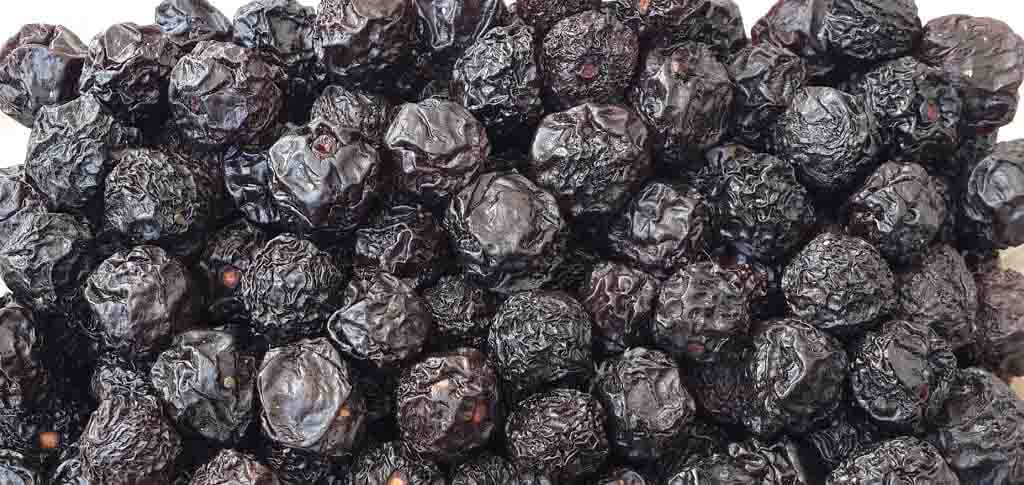
Aloobaloo – Wild cherry – آلو بالو – آلبالو – آلو
ماہیت ۔ ایک مشہور پھل ہے جو چھوٹا اور گول ہو تا ہے ۔ اس کے درخت کی شا خیں بکھر ی ہوئی ہو تی ہیں ۔ پھل ریٹھہ کے بر ابر اور اکثر ایک شا خ پہ دو لگے ہو تے ہیں ۔
رنگ ۔ پتے شا خیں سرخ ، خام پھل سبز ، پختہ سیا ہی مائل
ذ ائقہ ۔ شیریں، میخوش تقریباًمعتدل ترش اور کسیلا جبکہ خام ترش اور پختہ چا شی دار شیریں ۔
مزاج ۔ خام سرد اور خشک پہلے درجے میں ، پختہ گرم تر پہلے درجے میں ، شیریں گرم وتر، میخو ش تقریباً معتد ل ترش اور کسیلا سرد اور خشک ۔
افعال ۔ شیریں ملین صدراورملین طبع ، مدر ، مخرج ، سنگ ، گردہ مثانہ ۔
استعمال ۔ شیر یں اور تازہ آلو بالو اور حلق کی خشو نت وکھانسی کے لئے استعمال کیا جاتا ہے ۔ قبض کو دور کر تا ہے اور پیشاب بھی لاتا ہے ۔ ترش آلو صفراء خون کے جوش کو تسکین دینے کے علا وہ متلی اورقے کو روکنے کے لئے استعما ل کیا جا تاہے ۔ شیریں اور خشک یاتخم آلو بالو ، بادیان کے ہمراہ مدرحیض اور گر دہ مثا نہ کی پتھر ی کو توڑنے کیلئے کھلایاجاتا ہے ۔ شیریں اور خشک یا تخم آلو بالو ، نا دیان کے ہمراہ مدرحیض اور گر وہ مثا نہ کی پتھر ی کو تو ڑنے کے لئے استعما ل کیا جاتاہے ۔ چہر ے کے رنگ کو طلاءکیا جا تاہے ۔ آلو بالو کا شربت بھی بنایا جاتا ہے ۔ جو ادار اور اخراج سنگ گردہ مثانہ کیلئے مفید ہے
نوٹ ۔ شیریں اور تازہ آلو بالو چونکہ تخمہ اور ضعف معدہ پیدہ کرتا ہے ۔ اس لئے کھا نے کے بعد اس کا کھانا ممنو ع ہے ۔
فوائد خاص ۔ مفت حصاۃ مدربول اور ضعف معدہ اورحیض ۔
بدل ۔ آلو بخارا ۔
مصلح ۔ سکنجین لغاعی ،مرچ سیا ہ ، نمک طعام ۔
مقدارخوراک ۔ دو یا تین سے نو عدد تک ۔
مقدار خوراک ۔ دویا تین سے نو عدد تک ۔

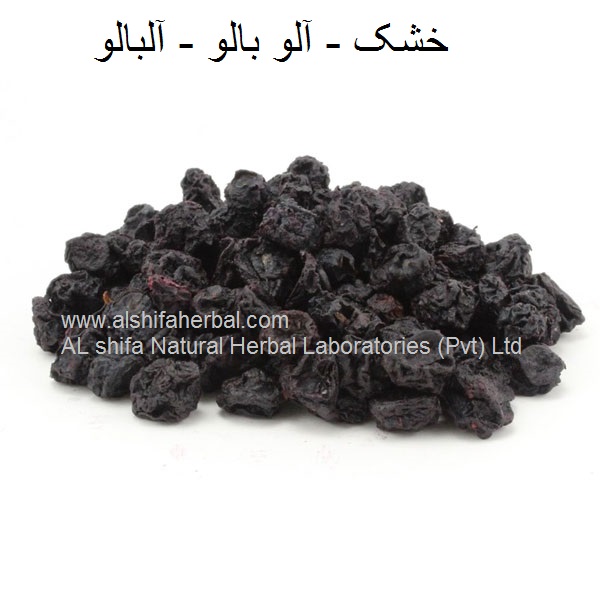

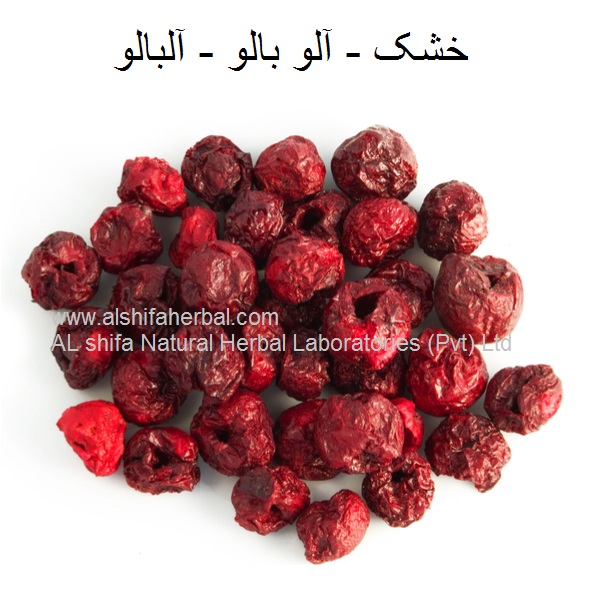
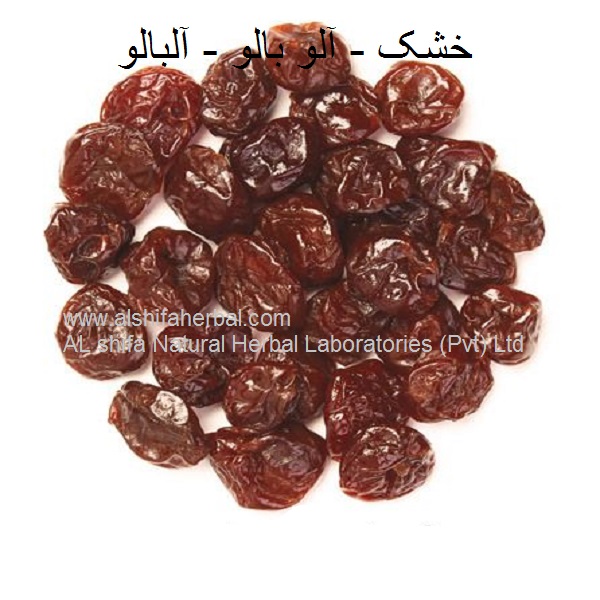
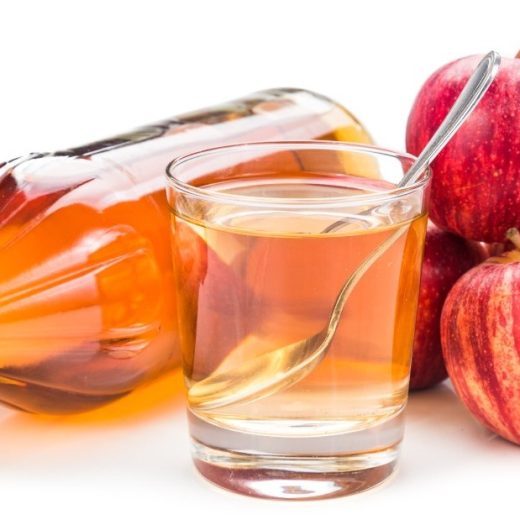
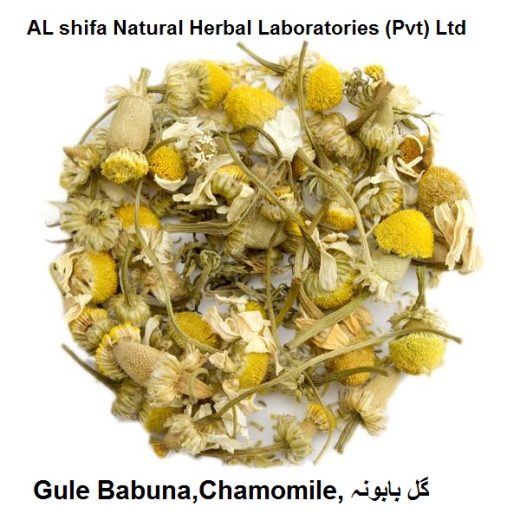
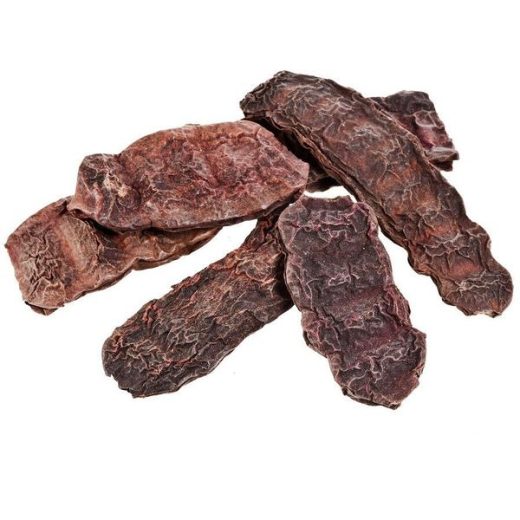



Reviews
There are no reviews yet.